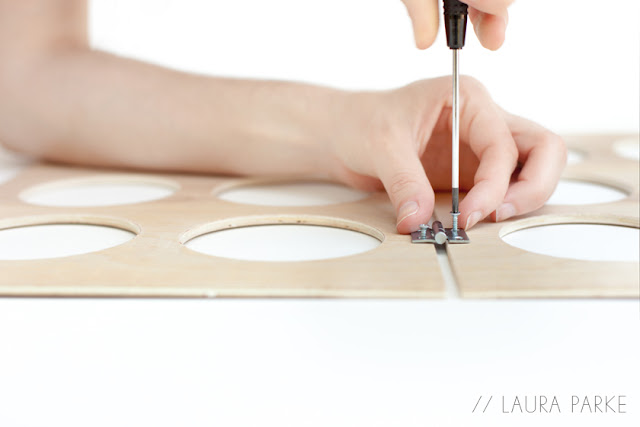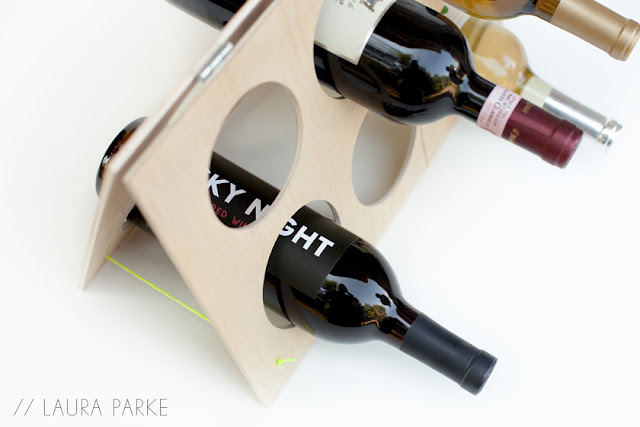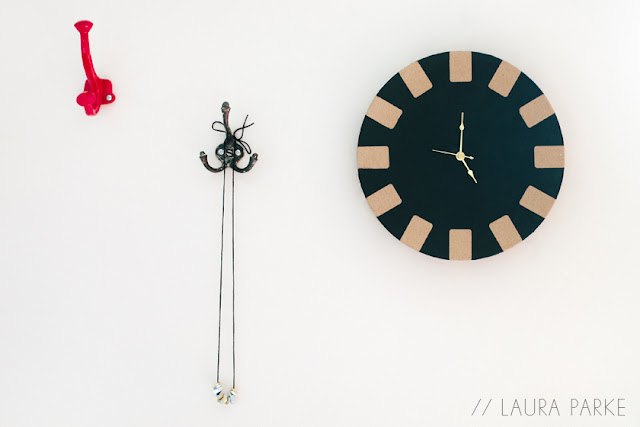MATERIALS:
-2 pieces of birch plywood (15 3/8" x 10")
-2 small hinges with screws
-screwdriver
-neon string (1 yard)
-3 1/2"drill bit (these can be pricey, but can be used for multiple projects)
-1/16" drill bit
-150 grit sandpaper (not shown)
-power drill (not shown)
STEP 1: Mark where the center of each circle will go, using a straight edge and a pencil. For reference, the ones shown here are 1 1/2" from the sides and 1" from the top and bottom. Also, each circle edge is 3/4" apart from one another. It might be helpful to use a protractor for this step to ensure the complete circles are spaced how you would like them to appear. Just use a pencil and erase after drilling if needed. *Please note that the drill bit will itself shave off some of the measurement, meaning the drill bit itself takes up some space, so the top margin might be a little less than 1" when finished, etc. This is a DIY project, not a professional piece.
STEP 2: Using the power drill with the 3 1/2" drill bit attached, drill six holes into each piece of plywood, making a total of 12 holes. 6 on each sheet of wood.
STEP 3: With the 150 grit sand paper, smooth any rough edges created from the drill.
STEP 4: Measure for the hinges. Here, I measured to the center of the hole. Install one side of the hinge. Matching up the second piece of wood, secure the other side of the hinge.
STEP 5: Set up the wine rack in an "A" frame manner, leaving the opening to about 6" wide.
STEP 6: Measure 1" in from the side and bottom and mark with a pencil. Using the 1/16" drill bit, drill a hole into each of the four corners that make up the bottom of the wine rack.
STEP 7: Using the neon string (10-12" should be enough), loop it through one of the holes and tie a double knot to secure it.
STEP 8: Take the other end of the string and loop it through the opposite hole and tie it in a double knot, making sure the opening is 6" when stretched to it's capacity. Trim the excess string. Do this same step to the other side and you're all finished!
Set your wine rack upright and load it up.




















































